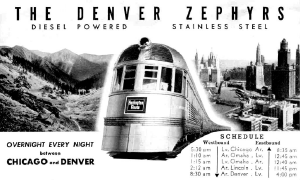First attempt at second filter:
What are the traffic functions after an upgrade?
If the route cannot compete directly for business traffic against air, several possibilities for traffic functions have to be checked:
- Can this route compete with the help of nighttrains, aiming at the kind of morning arrivals, that force the business traveler into 4 a.m. wakeups with air travel?
- Are there important intermediate stops, important enough to fill the trains, if the whole journey is too long for daytrains?
- Can this route compete against the car, which means providing low price plus flexibility in travel arrangements?
As a matter of course, the filtering of possibilities in this way needs a first estimation about possible gains in travel time, on the 525 miles via the Natron Cutoff, or the 550 miles via the Siskiyou line. Europeans or Japanese might be tempted to develop such estimation by comparison to existing, successful projects. This, however, is not so easy. On the next page, an example will show the difference between European and US practice in passenger rail.

The concept of fast overnighters, which fit to morning appointments, was invented in the USA.
Today, it is used only in Europe, and the tracks between Chicago and Denver are no invitation to a fast run.